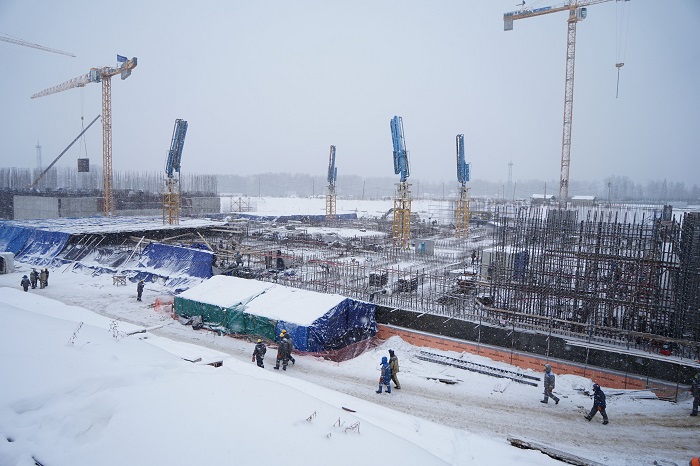Another milestone achieved in construction of the innovative BREST-OD-300 fast neutron reactor at the site of the Siberian Chemical Combine, a subsidiary of Rosatom’s TVEL Fuel Company, as the pouring of the nuclear island’s foundation slab has been completed.
The BREST-OD-300 foundation slab, 90 x 82 meters and 2.5 meters thick, consists of nine separate units. The works have been carried out by the general contractor Titan-2, the scientific support is provided by the Research Institute of Reinforced Concrete Structures, based in Saint-Petersburg.
Almost 19 thousand cubic meters of concrete, 4.3 thousand tons of reinforcement were laid in the foundation slab of the nuclear island – this volume would be enough for construction of two eight-story buildings. The builders have been working around the clock.

The plate strength for BREST-OD-300 is significantly higher than for standard reactors. The foundation concreting had been preceded by the profound research, the properties of concrete had been thoroughly studied, in order to ensure the required quality. In May 2021, before the first concrete was poured, a model of the foundation slab had been created, so that the experts could test the quality of joints between the blocks. The foundation slab is based 6,4 meters underground. Currently, the builders are working on construction of the boundary walls.
The construction of a 300 MW nuclear power unit enabled with the innovative BREST-OD-300 lead-cooled fast reactor began on June 8, 2021, at the site of the Siberian Chemical Combine in Seversk, Russia’s Tomsk region. The reactor will run on mixed uranium-plutonium nitride fuel, specially developed for this facility (it is considered to be the optimal solution for fast reactors).
The power plant will make up an integral part of the Pilot Demonstration Energy Complex (PDEC) – a cluster of three interconnected unique facilities, including the nuclear fuel production plant (for fabrication and refabrication), the BREST-OD-300 power unit, and the facility for irradiated fuel reprocessing. For the first time in history, a nuclear power plant powered by a fast reactor will be built alongside closed nuclear fuel cycle servicing enterprises on one site. After reprocessing, the irradiated fuel from the reactor will be sent for refabrication (i.e. reproduction into fresh fuel), thereby giving this system the means to gradually become practically autonomous and independent of external resources supplies. PDEC is constructed in the framework of ROSATOM’s “Breakthough” project, aimed at development of the new technological platform for the nuclear industry.